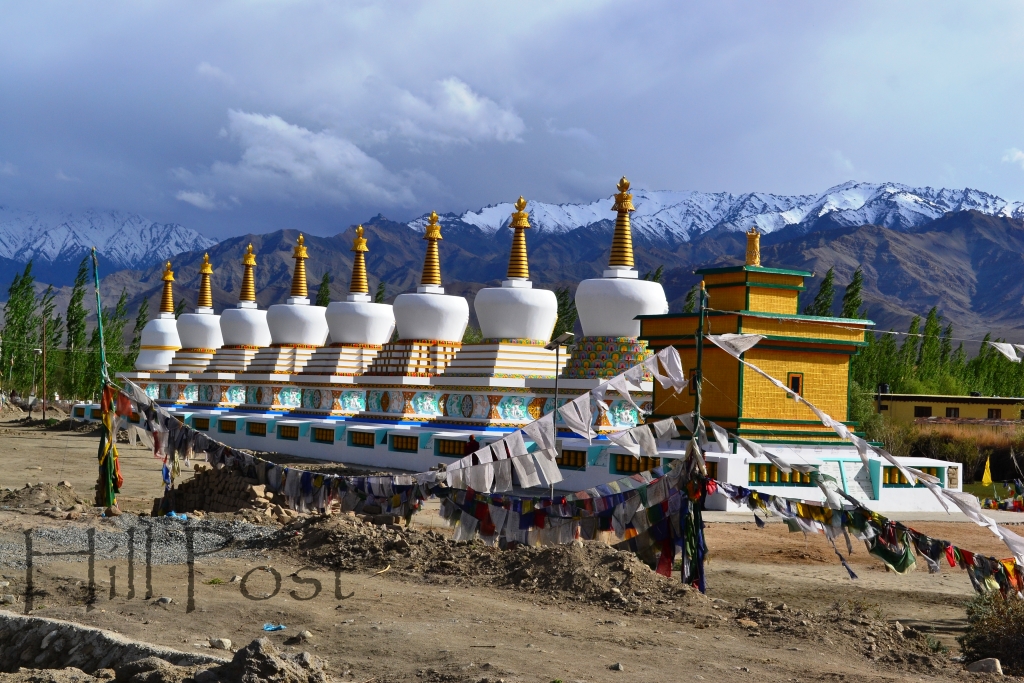
Nangchen (China): Nestled in eastern Tibet and surrounded by breathtaking natural beauty, Nangchen is once again in the spotlight with the restoration of a 2,000-year-old stupa constructed by Indian emperor Ashoka and the installation of a 35-metre statue of the Buddha worth $6 million. It spells a ray of hope for locals who see in it a new beginning and economic growth.
The seeds of the restoration project were sown a decade ago, Singapore-based businessman Felix Lim Ah Yeong, son-in-law of Aw Boon Haw, the founder of Tiger Balm, told IANS.
“My wife and I met his holiness (Gyalwang Drupka, who leads the Drupka Buddhists) 10 years ago in Bali. He mentioned that one of his ambitions was to rebuild the Amitabha stupa. My wife and me said ‘Ok’ – and thus started the project,” Felix said.
Asked how much money has been pumped into the project, he said: “The Buddha statue alone is worth $6 million.” As for how much the entire project cost, he said this could be gauged from how much the statue had cost – and left it at that.
“It took a long time to make the statue. A Bhutanese sculptor made the model and it took him 10 years to do it. After he completed the model, he died. We took the model to a factory in Nanjing that specialises in making Budhha statues,” he said, adding it was fabricated out of the same alloys used for making spaceships.
Were there any restrictions from the Chinese government? Felix said: “The Chinese government does not encourage and does not discourage if it is a part of the region’s culture. Buddhism started in China 2,500 years ago and it’s a part of the region’s culture.”
Located in China’s Qinghai province 4,000 metres above sea level, Nangchen was abuzz with activity at the inauguration of the restored stupa, which is 95 percent complete, late last month. Thousands of people flocked to the place to witness Gyalwang Drukpa conduct the inauguration ceremony.
The crowd was so huge that it led to a traffic jam around the stupa as cars and other vehicles came to a standstill.
Away from modern society, the Nangchen region has an old world charm, with its vast open spaces, pastures dotted with yak and sheep, mountain peaks that seem to touch the sky and a river flowing through it. Its inhabitants, who wear ancient Tibetan costumes and headgear, depend on animals like sheep, yak and cows and on farming for a livelihood.
At the same time, they aspire for a better life. “The people want to move out in search of a better life but at the same time they want to retain their culture,” said Nawang Chirum, a teacher.
Primary education is a must for everyone in the region, which has a population of about 90,000. One major step the people have taken towards their upliftment “is that they are also growing a special herb available in high altitudes and which is quite popular among Tibetans”, Chirum said.
As for the stupa, he said it would promote not only spiritual happiness but also economic growth.
“There are many benefits of the stupa. First, the place has become more prominent and tourism will be boosted. This would result in the growth of service industry and create job opportunities for the people who want to have a better life,” Chirum said.
So, how did the stupa get there in the first place?
Quoting Buddhist scriptures, a posting on www.nangchen.org said: “With the wish of spreading the teachings of the Buddha, King Ashoka of India divided the relics of Lord Buddha and constructed 84,000 stupas to enshrine these precious objects of devotion.”
“In China, 19 of such stupas were constructed. However, most of them have collapsed due to natural wear and tear as well as human negligence. Some have been moved to other locations. In the process of restoring some of these stupas, many relics of Lord Buddha and a huge amount of precious offering items were discovered. The stupa in Nangchen was one of these 19 archaic and precious structures of devotion.
“In history, Nangchen was an important centre of politics and trades in Eastern Tibet, and therefore it was also a very active centre for missionary activities. This explains why Ashoka chose Nangchen as one of the locations to build the reliquary stupa. In the later history, Nangchen too proved to be an extraordinary place for spreading Buddhism. With the support of the once-glorious Nangchen dynasty, this Buddhist kingdom had produced generations of Dharma kings, exemplary scholars and amazingly qualified monks, yogis and practitioners.
“Therefore Nangchen is also fondly known by great masters as Gomde or the ‘abode of meditators’ “.
– IANS
The opinions, beliefs and viewpoints expressed by authors, news service providers on this page do not necessarily reflect the opinions, beliefs and viewpoints of Hill Post. Any views or opinions are not intended to malign any religion, ethnic group, club, organization, company, or individual.
Hill Post makes no representations as to the accuracy or completeness of any information on this site page.




Lucky to see it.